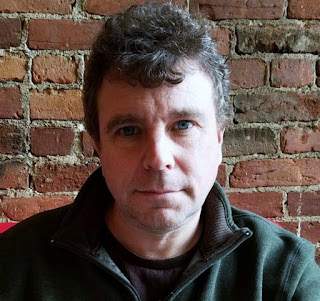WHAT THE BIG
DIG WOULD LIKE NORTH END RESIDENTS TO BELIEVE
(Originally published in the Boston Post Gazette June 2, 2000)
By
Jay Gillespie
A few
days following my story concerning the eventual removal of the sign restricting
a left turn from Cooper Street onto North Washington, I was approached by Paul
Santilli and invited on a tour of the Big Dig parcel that is currently under
supervision of J.F. White Contracting.
Santilli is the Community Relations liaison between J.F. White and the
North End. On May 22nd, I met
up with Mr. Santilli on Cooper Street.
It was from there that we began our excursion into the depths of
Boston’s nationally recognized and justifiably criticized Big Dig Project.
In a
previous article, I inferred that workers on this site were either reluctant to
speak to inquiring citizens or as confused as the general public with regard to
the progress of the project. Santilli
attempted to clarify this notion by explaining to me that all work has been
divided up into individual pieces.
Modern Continental Construction has the territory from roughly South
Station to the Callahan Tunnel, J.F. White is responsible for the area from the
Callahan to Cooper Street, and Cashman is working the parcel from Cooper Street
to the Fleet Center. Santilli’s company,
J.F. White, is building a utility corridor.
“This is a very delicate area.
You can see them working on sewer, water, and telephone operations,”
said Santilli. “This platform covers the
tunnel and will serve as the road when it is ready. Stillman Street is nearly ready to open
now. We are just waiting for agreement
from Cashman. Although we are ready,
traffic from Stillman will filter into their area so it has to be discussed due
to its direct effect on their work environment.
We have been pushing to come up with a new plan.”
Santilli
led me through the pedestrian walkway in the direction of Boston’s
downtown. I was instructed to look down
into the depths of the new tunnel being built.
“This is what we call a Glory Hole,” said Santilli. “That bulldozer just pushes dirt aside all
day, then it is taken up with a crane and hauled away in trucks. There are about ten Glory Holes currently on
this end of the project.” Of course,
Santilli neglected to mention the countless particles of dirt that never reach
the cranes or trucks and blow freely through the North End air. A few years back I lived on the top floor at
68 Salem Street. As a result of the
construction work that had only just begun, my apartment was more reminiscent
of a dusty coal mine than a comfortable place to live. “This place has never been so clean,”
Santilli added. “We sweep and clean this
and the Freedom Trail every day.”
As we
emerged onto Blackstone Street, Santilli spoke of the successful continuation
of business in Haymarket Square and how shops and restaurants have not missed a
single day of operation due to the Big Dig.
Ever conscious of the controversial construction of the Bostonian Hotel
nearly twenty years ago and its subsequent effect on the Haymarket area, I was
intrigued by Santilli’s claim and decided to investigate.
I
visited Afrikan Meat Market on Blackstone Street and spoke with the owner,
Hassan Massaadi. “I’ve had a cooler
broken, floods, and I have had to hire lawyers because of them,” Massaadi
said. It turns out that Massaadi’s
market started to mysteriously flood last December. As a result, he called the Boston Water
Department. After coming in and testing
the water, the city determined that the water was from the Big Dig. The Big Dig, however, has refused to accept
any responsibility. “They claim that it
is not their problem,” according to Massaadi.
“I had to file a claim. The
insurance company has been down twice to take pictures, but those people (the
Big Dig) blame it on the city. I have
lost business, money, and meat. I was
forced to close for five days because of a flood. I had to give permission to the city to break
a large wall of my cooler just so they could determine where the water was
coming from. Now every time it rains I
get flooded and my store has a foot of water on the floor. How can I do business like that?”
Santilli
and I turned left onto North Street and headed for cover underneath the
expressway. As a policeman directed
traffic coming down the off-ramp, Santilli told me that it was the
responsibility of the Big Dig to have all work areas properly detailed with
traffic enforcement. “Where it is necessary,
we have to have police officers for traffic safety. Aside from that, we are responsible for all
signs and street markings that you see to direct traffic. We do this stuff constantly and we pay for
it. We pay for everything.” I can only wonder how Hassan Massaadi would
have reacted to that proclamation.
“We are
almost done with this area. It will
continue on from here in the same direction that the expressway takes today,
but the future options for drivers will be greater. There will be greater options for routes to
Logan Airport, Storrow Drive, and Route 1 that will be available before drivers
are bogged down in city traffic.”
I
wonder how many drivers will think about Hassan Massaadi and other small shop
owners sacrificed to Big Dig bureaucracy as they buzz underneath the city en
route to the airport on the speedy new expressway. On behalf of Hassan Massaadi and myself, I
sincerely hope that they all catch their flights to Palm Beach. We’ll be here in Boston trying to resurrect a
small business.




Comments
Post a Comment